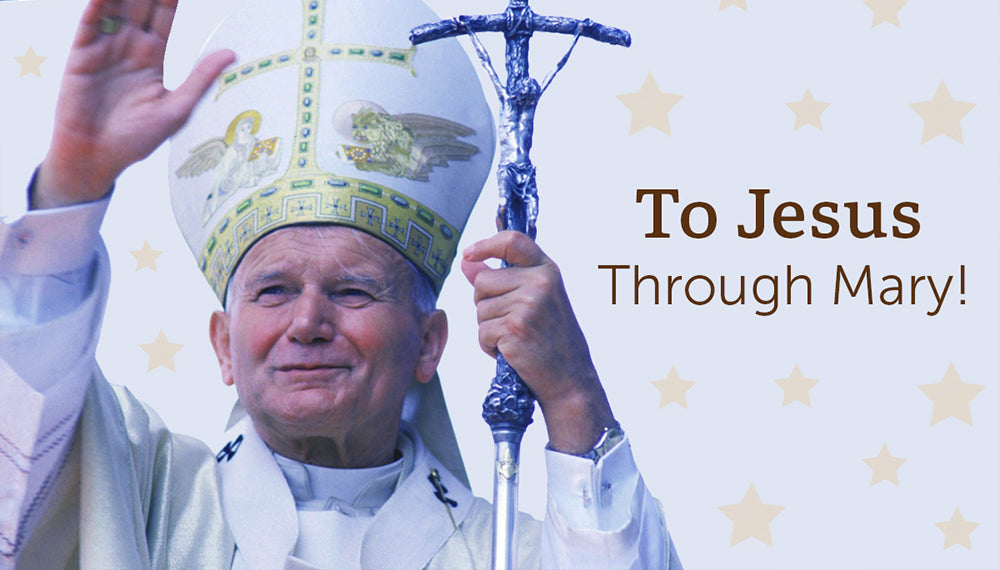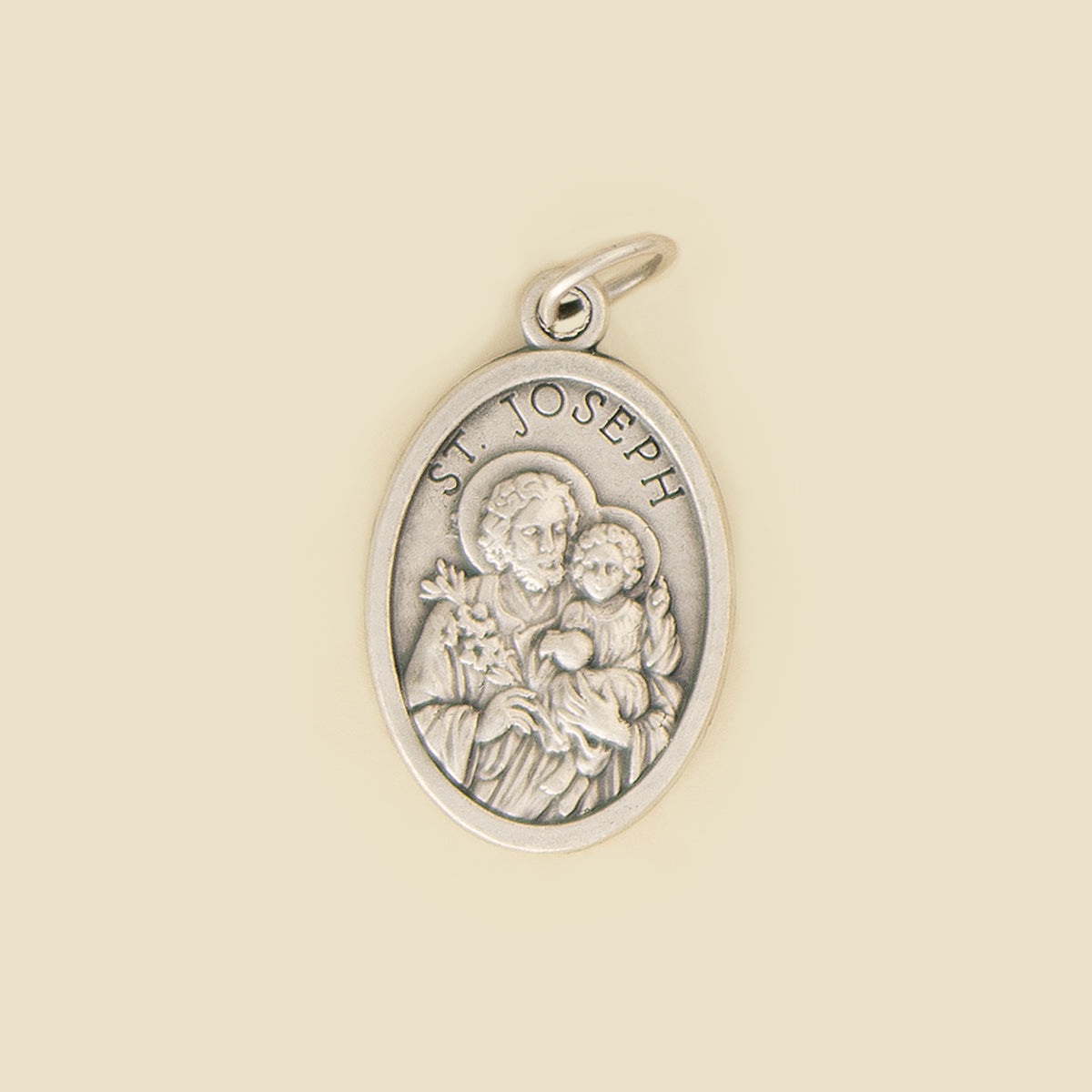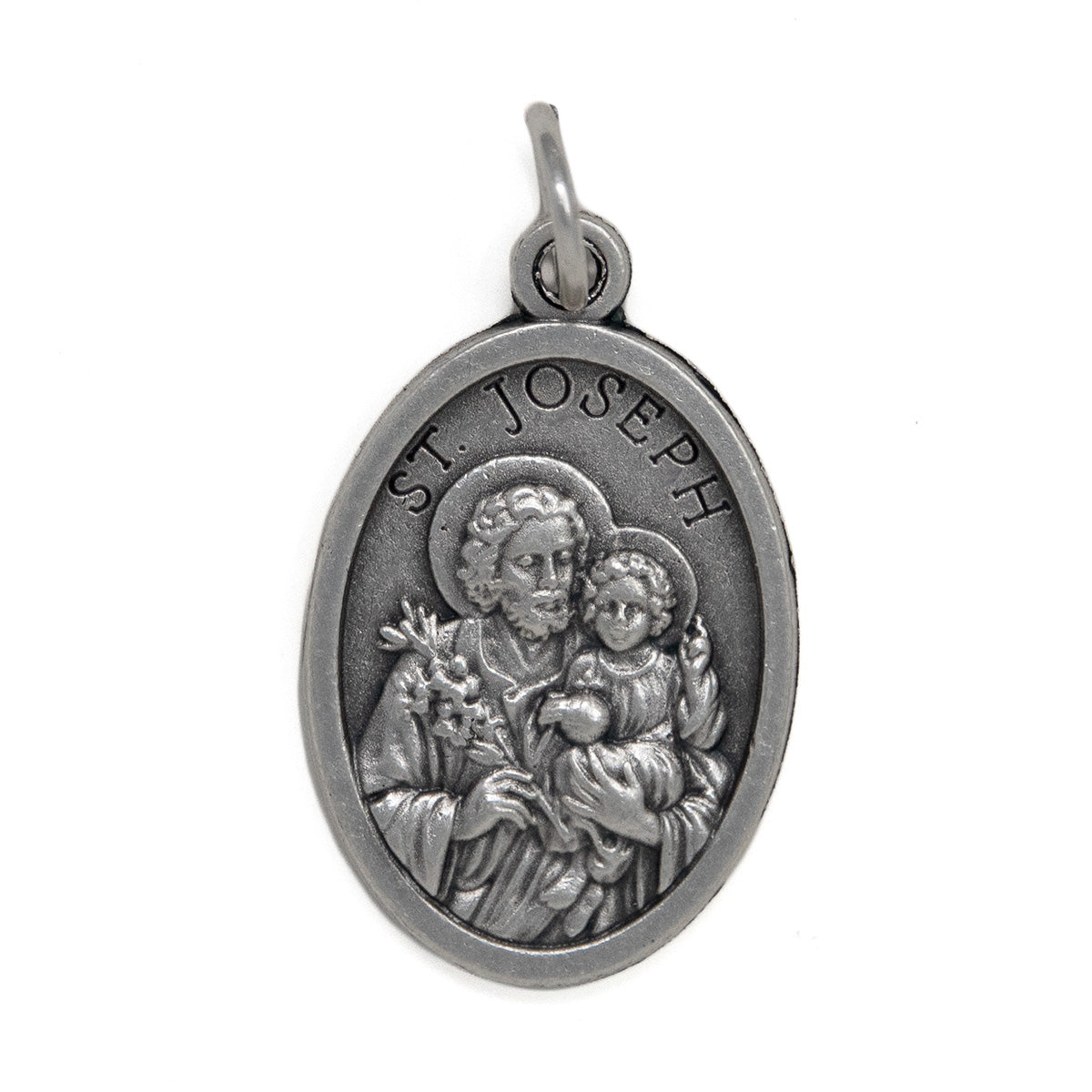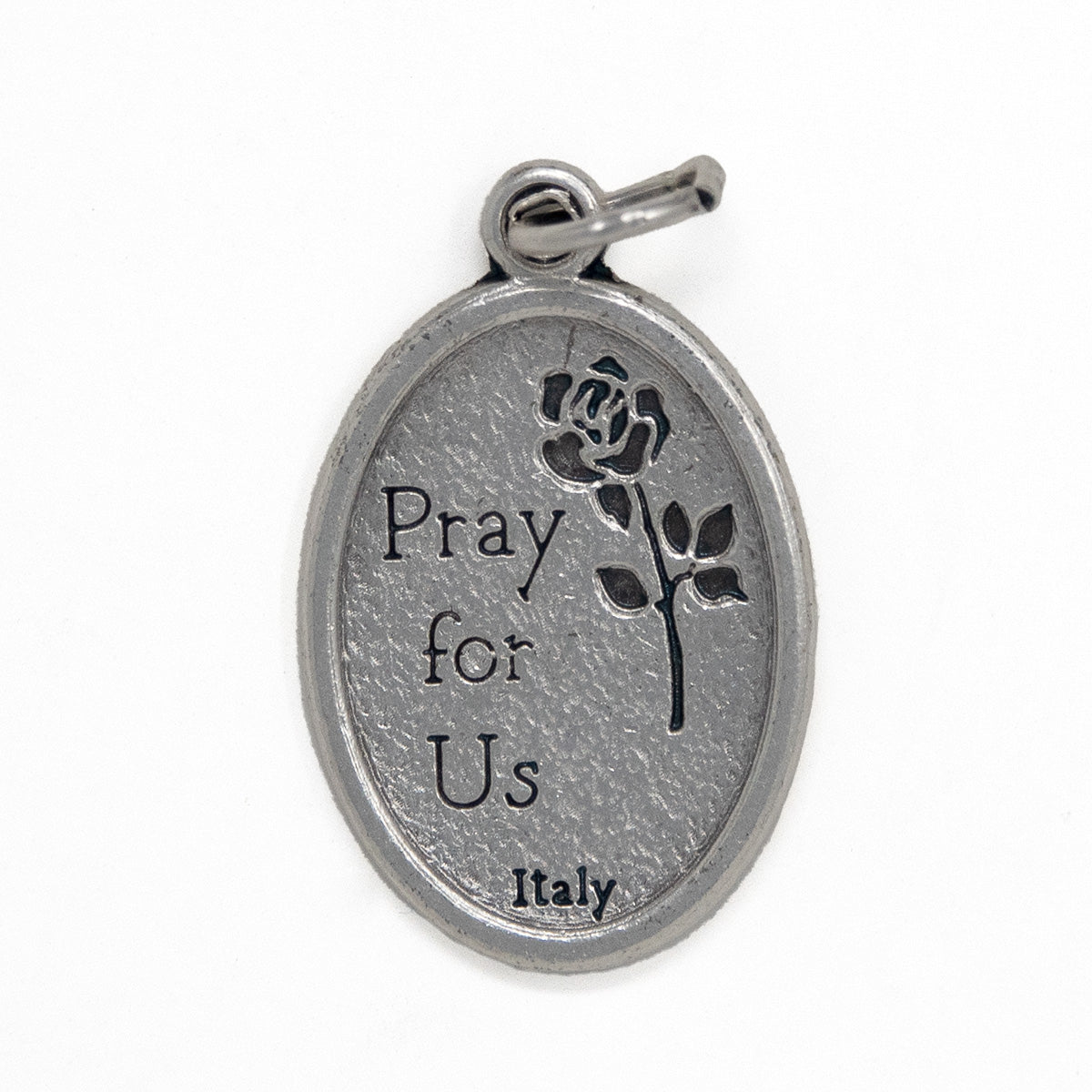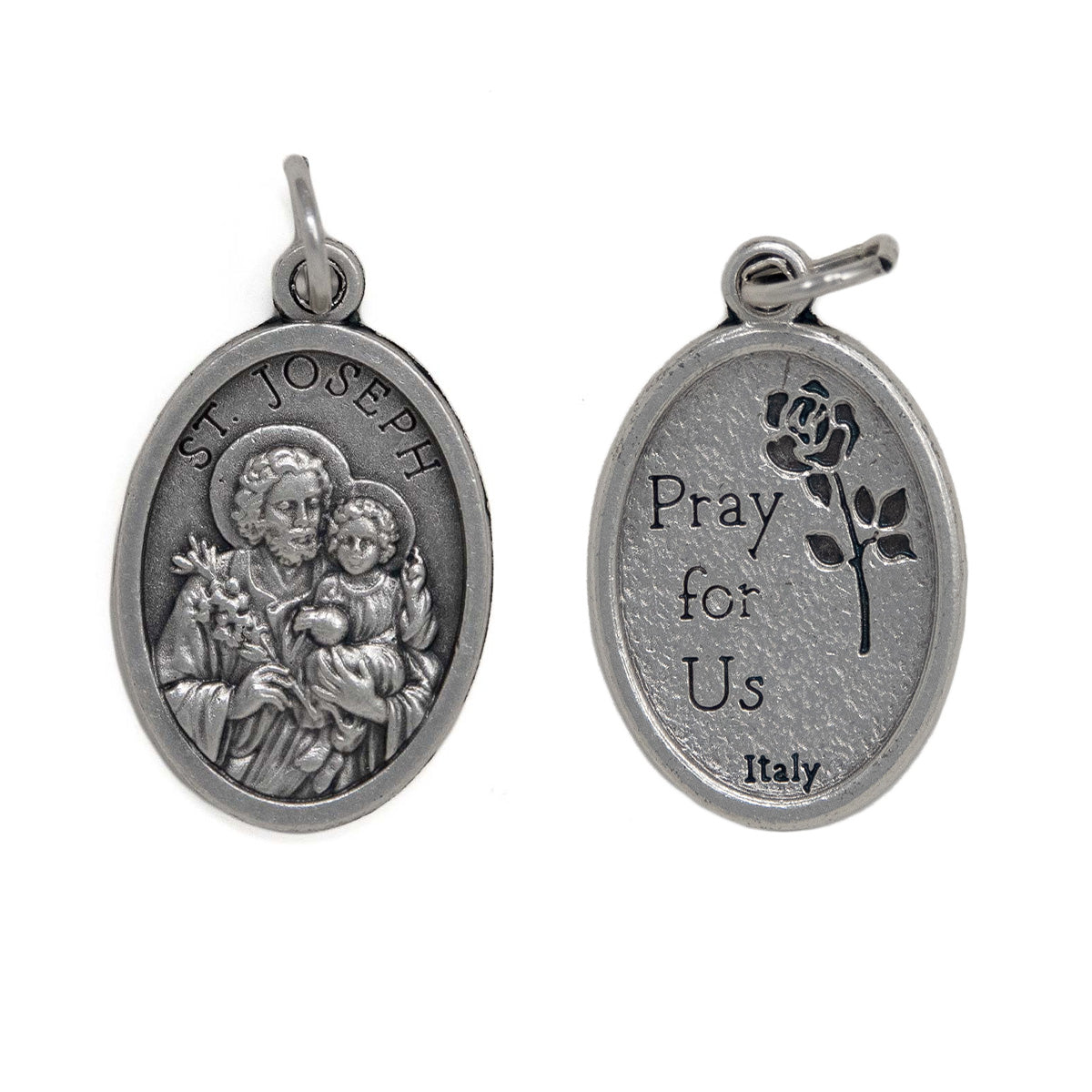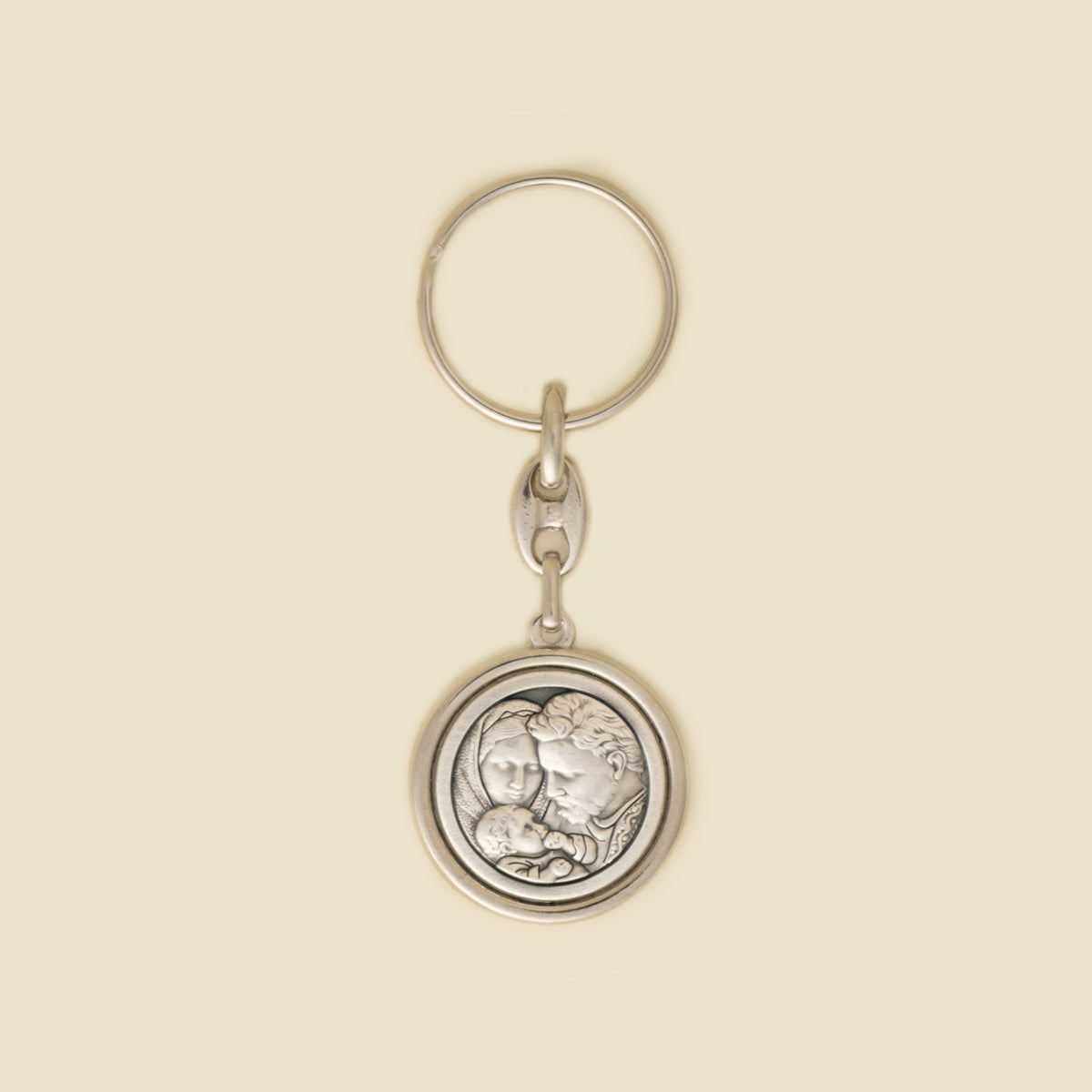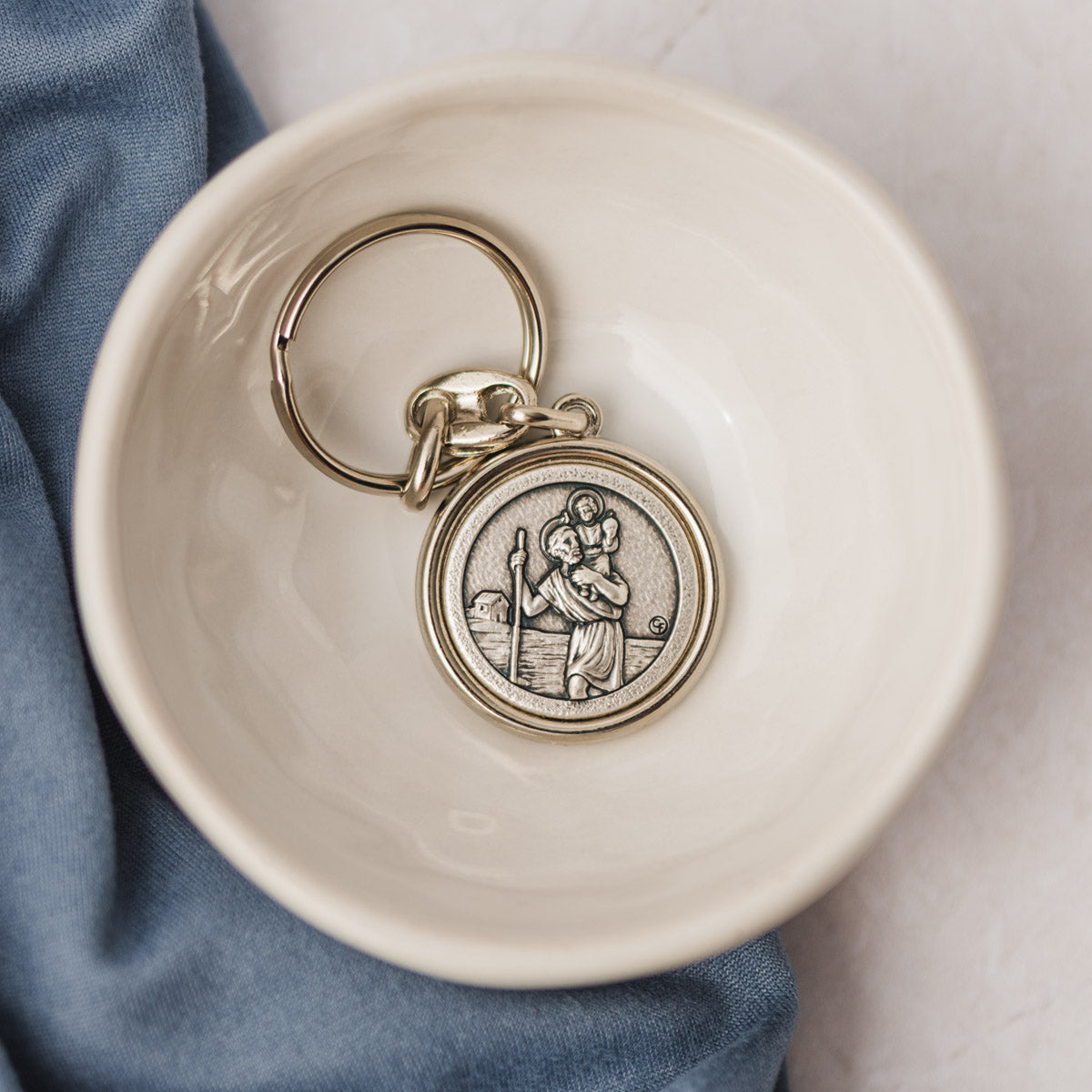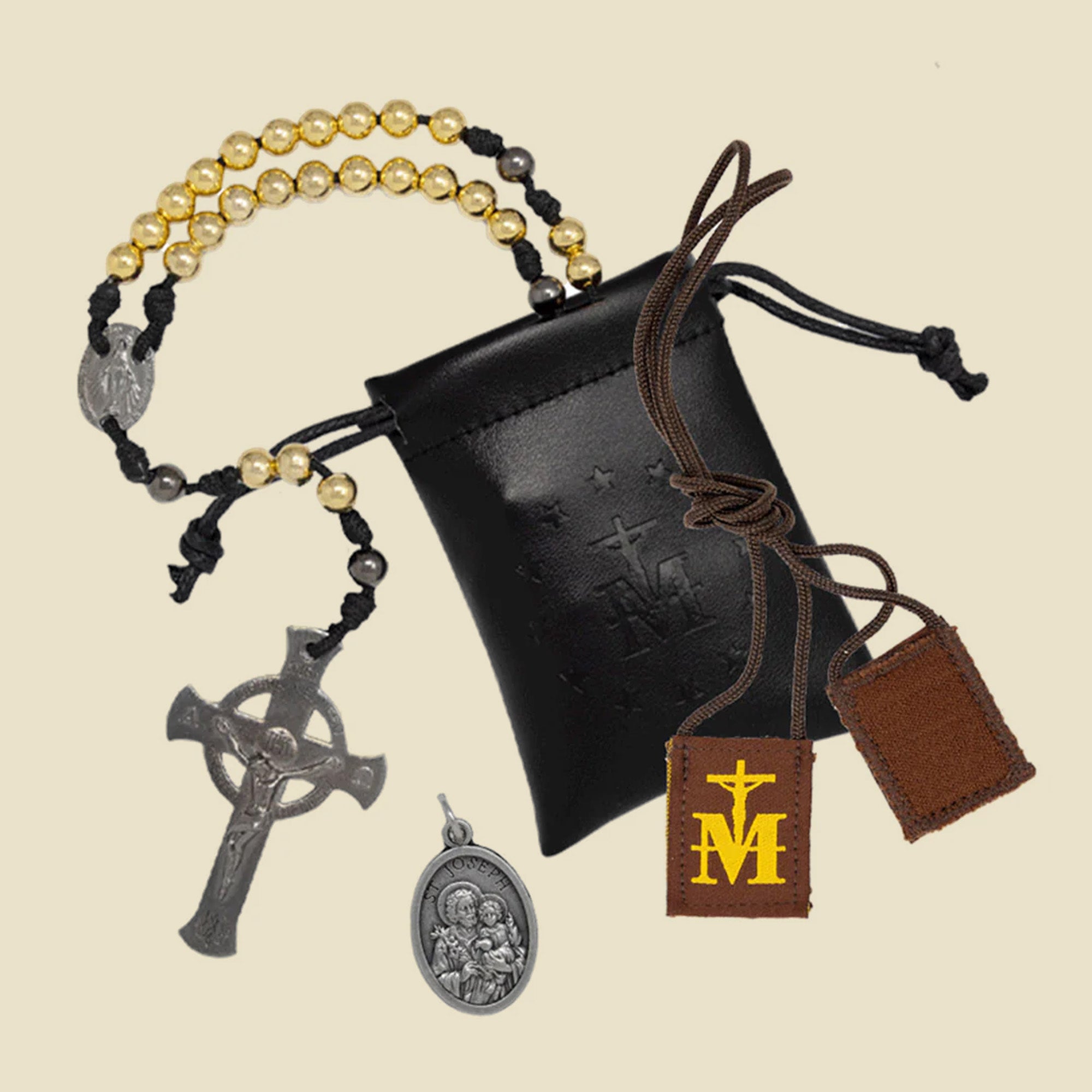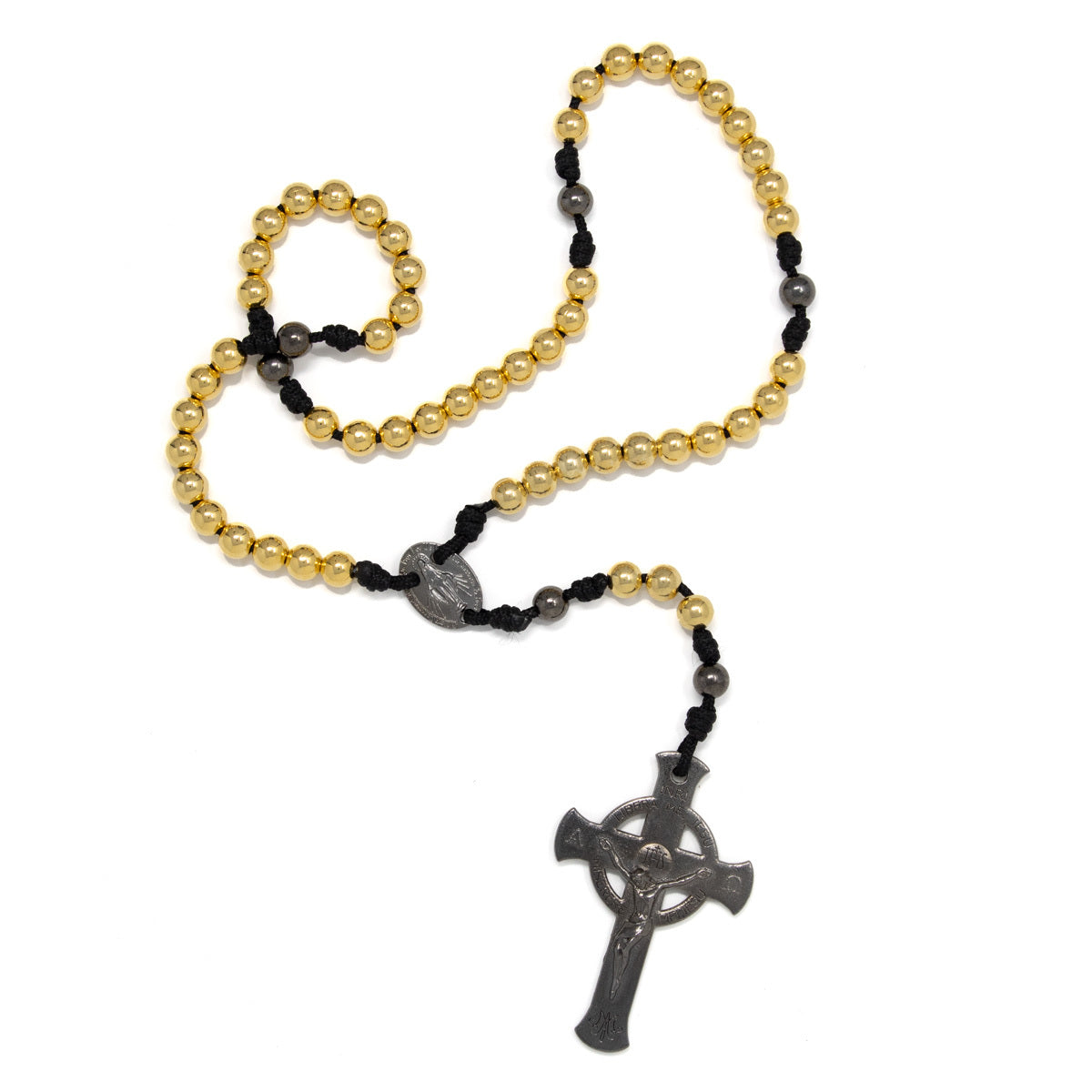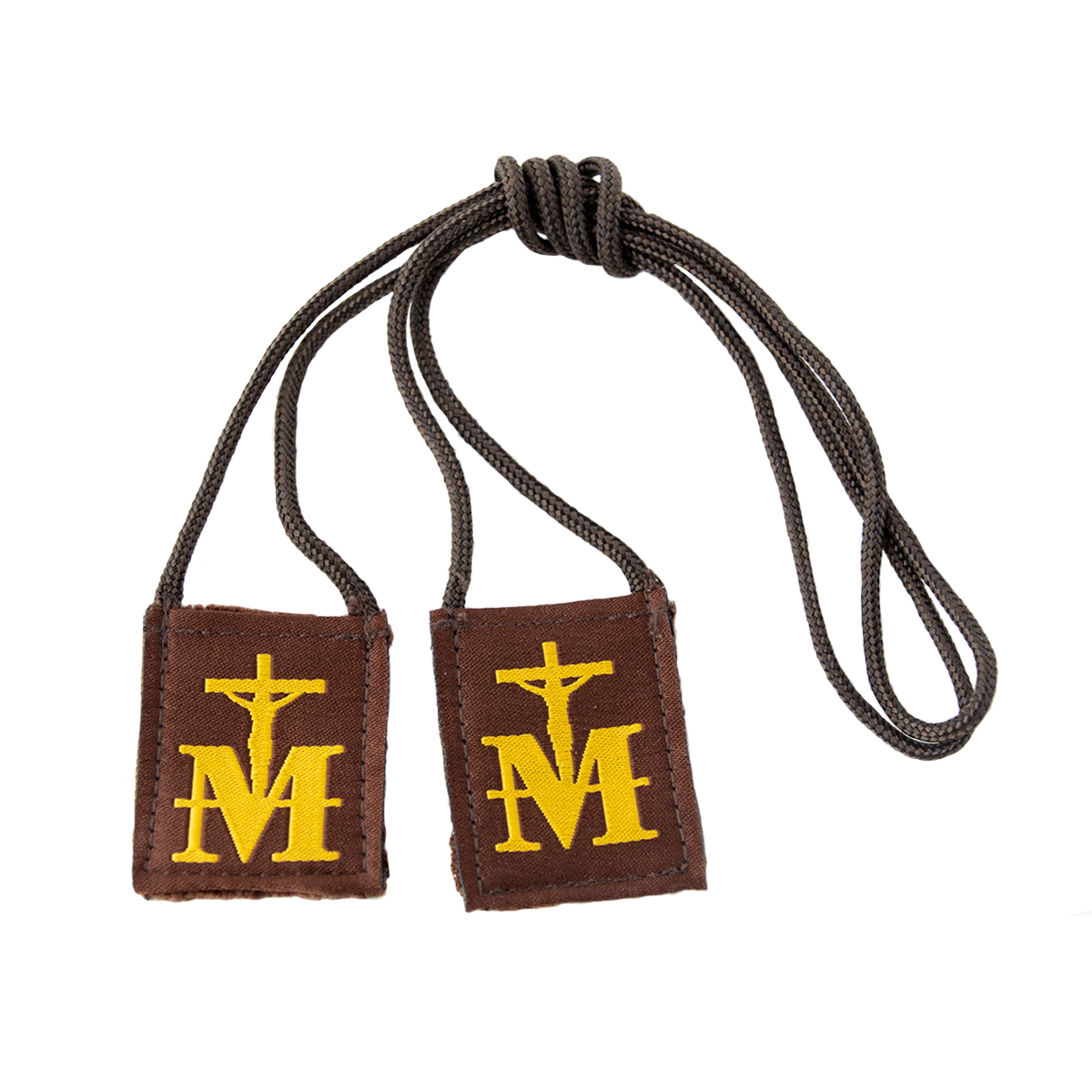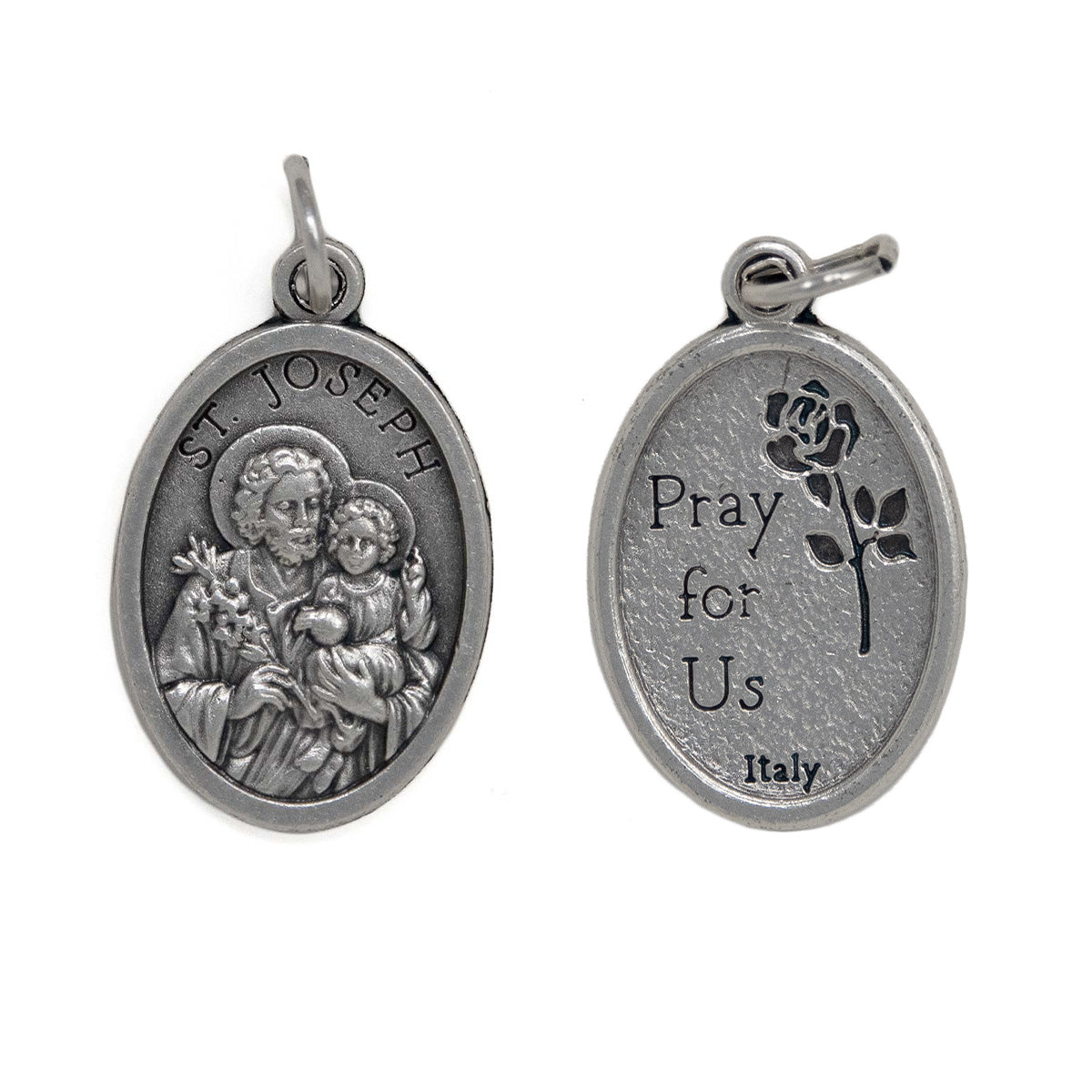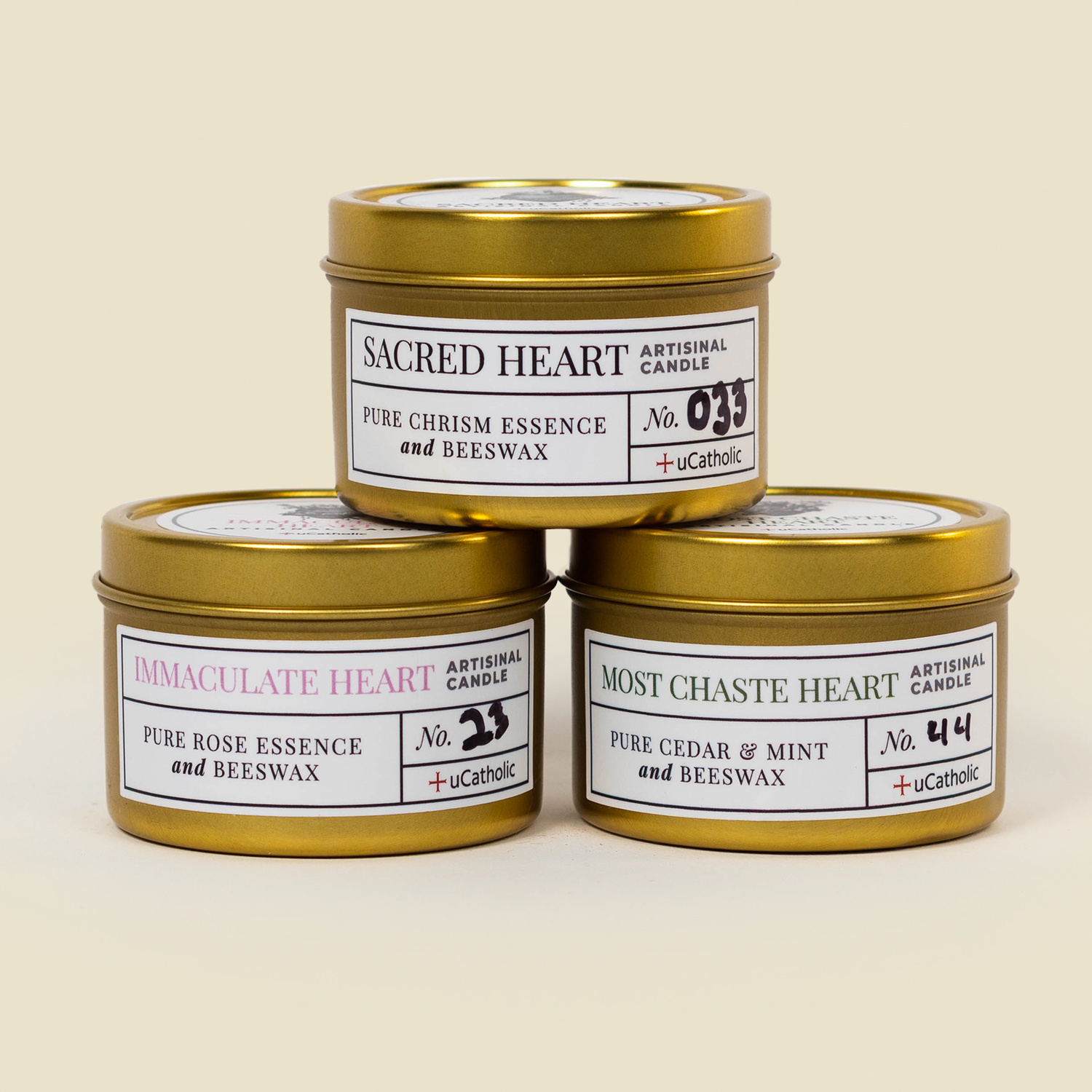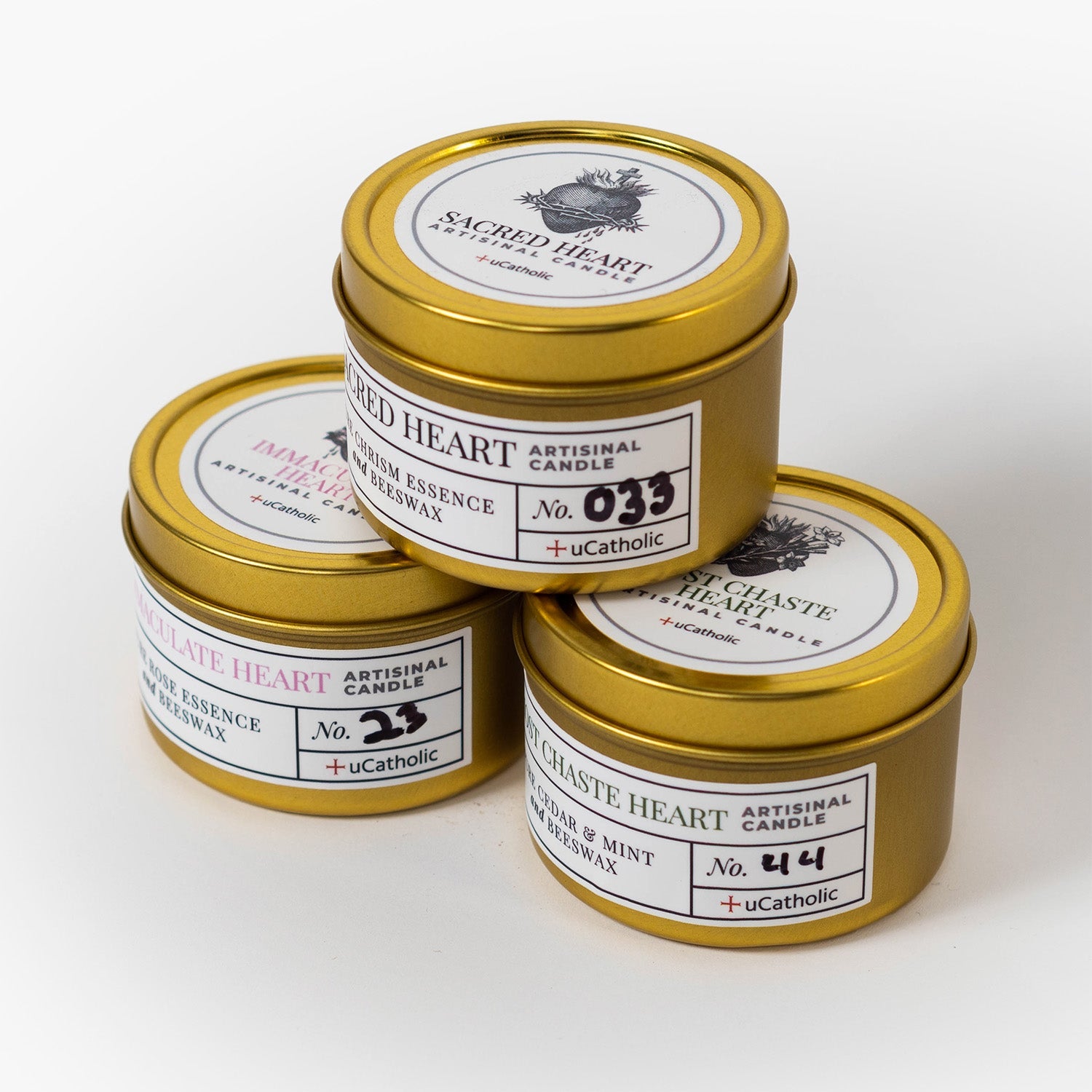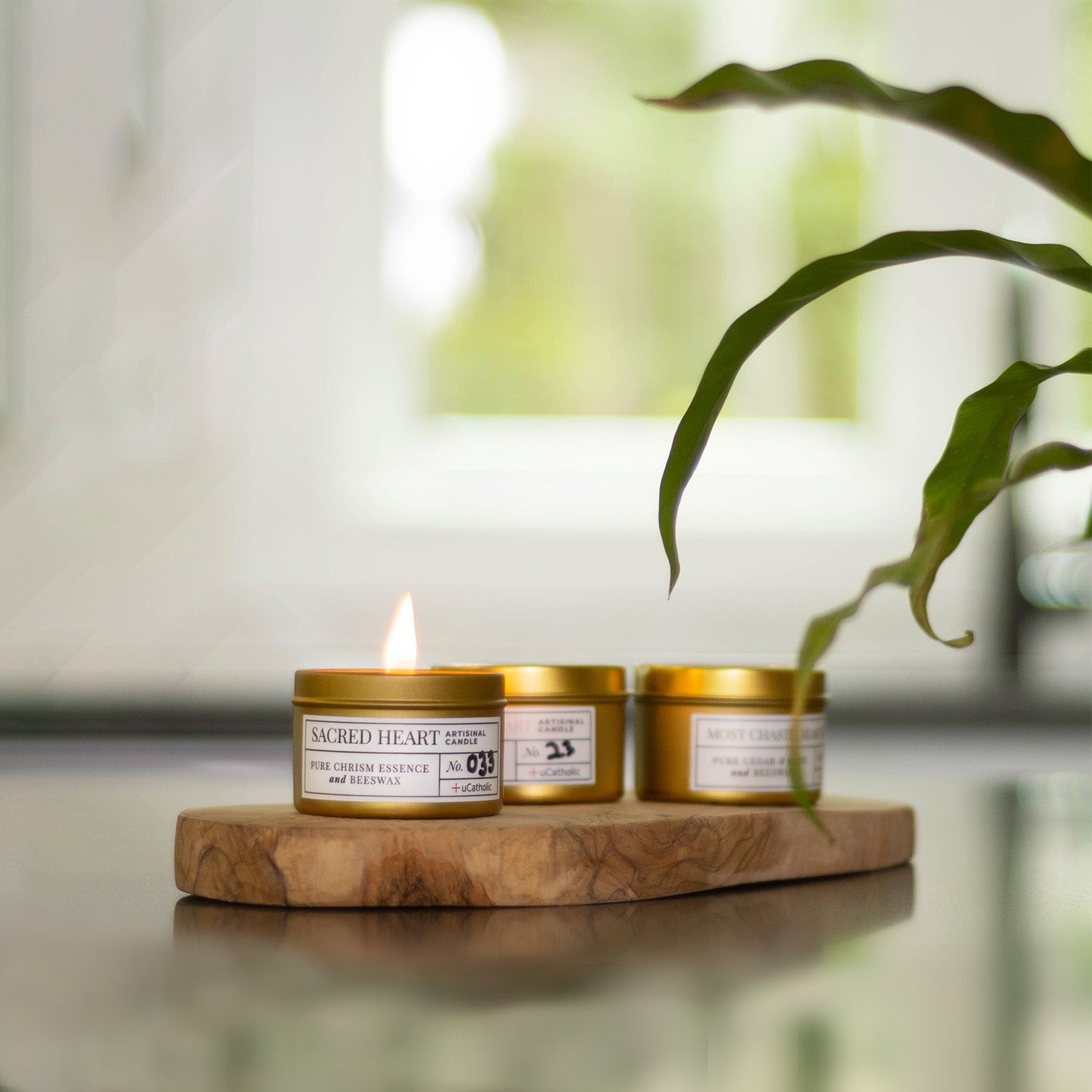Karol Wojtyla’s Early Life and Devotion
The future St. John Paul II—then called Karol Józef Wojtyła—lost his earthly mother when he was only 9 years old. The young saint clung to his childhood scapular (pictured below) as a physical symbol of the Blessed Mother’s presence, through which she brought comfort and strength in the years following this tragedy.

Children can be vested in this devotion as soon as they reach the age of reason (usually age 7), but it is never too late to begin or renew your observance! Check out our collection of child-sized scapulars. They make perfect gifts for all your little saints!
St. John Paul II Wore the Brown Scapular as a Young Man
Karol’s early adulthood is an excellent model of Marian devotion integrated into an active lifestyle. He enjoyed skiing, swimming, fishing, theater, and poetry—wearing the brown scapular everywhere he went. Here is the future Pope John Paul II working in the quarry with his scapular visible around his neck!

As a young man Karol feared it was possible to love the Blessed Mother too much, but St. Louis de Montfort’s book True Devotion to Mary put those concerns at ease. He realized that devotion to Mary is inherently Christocentric and fundamental to the Catholic faith.
He said, “It happened that the devotion of my childhood and even my adolescence to the Mother of Christ gave way to a new attitude, a devotion coming from the depths of my faith, as from the very heart of the Trinitarian and Christological reality.” Pope John Paul II later marked this as a turning point in his spiritual maturity.
Karol Wojtyla Advocated the Rosary During Nazi Occupation
When Germany invaded Poland, young Karol turned to the Blessed Mother for assistance. He joined a devotion called the Living Rosary, founded by Bl. Pauline Jaricot, and became a local leader and advocate of this practice.
The Living Rosary is a prayer group made up of 15 people committed to praying a decade of the Rosary every day. Each participant represents one of the traditional 15 mysteries of the Rosary, meditating upon their assigned mystery for a full month. Karol continued to organize such groups well into his priesthood, bringing the Living Rosary devotion with him to each new parish assignment.
Karol Wojtyla Almost Joined the Carmelite Order
Karol’s interest in the priesthood had to be kept secret due to ongoing Nazi persecution of the Church in Poland. The Archbishop of Krakow trained Karol and other young men in a “secret seminary” until the war ended.
With his love of Our Lady of Mount Carmel and the brown scapular devotion, it was only natural that Karol considered becoming a Discalced Carmelite. He applied to enter a Carmelite monastery at Czerna, but Cardinal Sapieha insisted that the student “finish what he started” in diocesan seminary.
Soon after ordination, Father Karol became known for his holiness and quickly rose through the ranks of the Church Hierarchy. He was named Auxiliary Bishop of Krakow at age 38, the youngest bishop in Poland at the time. Bishop Wojtyla took part in the Second Vatican Council, and within ten years he was made a cardinal.
John Paul II’s Marian Devotion as Pope
Pope John Paul II never hid his love for the Blessed Mother. His papal motto honored her by name, and his coat of arms included a capital M at the foot of the Cross to represent Our Lady’s faithful presence in the life of Christ.
Pope John Paul II and the Brown Scapular
The Pope continued to express his deep devotion to Our Lady by faithfully wearing the brown scapular, a practice which provided extra grace and protection until the day he went home to Heaven.
When he was the target of an assasination attempt in St. Peter’s Square, Pope John Paul II did not allow his scapular to be removed even during his life-saving surgery. Doctors said the assassin narrowly missed the Pope’s heart to which he responded, “It was a mother's hand that guided the bullet's path.”
He believed Our Lady was responsible for saving his life—as the attack happened on her feast day—and later had that same bullet placed in the crown of Our Lady of Fatima’s statue out of gratitude.
Pope John Paul II publicly promoted the brown scapular devotion, recommending it for all Catholics. He said, “The sign of the Scapular points to an effective synthesis of Marian spirituality, which nourishes the devotion of believers and makes them sensitive to the Virgin Mother’s loving presence in their lives.”

Pope John Paul II and the Rosary
As Pope, St. John Paul II was a major advocate of the Holy Rosary, even adding the four Luminous Mysteries during his papacy! He also instituted the Year of the Rosary in 2002, and dedicated the apostolic letter Rosarium Virginis Mariae to teaching about the prayer.
He called the Rosary the “School of Mary” wherein we encounter the living Christ. What better way to learn about Jesus than through the eyes of his holy mother?
Pope John Paul II was known for his missionary spirit, visiting 129 countries and 879 cities during his papacy. Pope John Paul II brought the rosary with him on all his travels, encouraging Catholics everywhere to pray for peace.
A Model to Follow
St. Pope John Paul II left quite an impact on the world, and a big part of his legacy was his fervent devotion to the Blessed Virgin Mary. Let us ask for his intercession as we live out our daily consecration to Jesus through Mary, praying the Rosary and wearing the scapular as a reminder that our Heavenly Queen is always near.
St. John Paul II, pray for us!
Steve Kerekes
Founder of Scapulars.com
Sources: Aleteia, "The saint who assured John Paul II that he was 'allowed' a tremendous devotion to Mary", Vatican, "Rosarium Virginis Mariae", Angelus News, "Learning from St. John Paul II's love for the rosary"
Read More:
The Promises of the Brown Scapular, Scapular myth #1: Brown scapulars are supposed to be uncomfortable.

